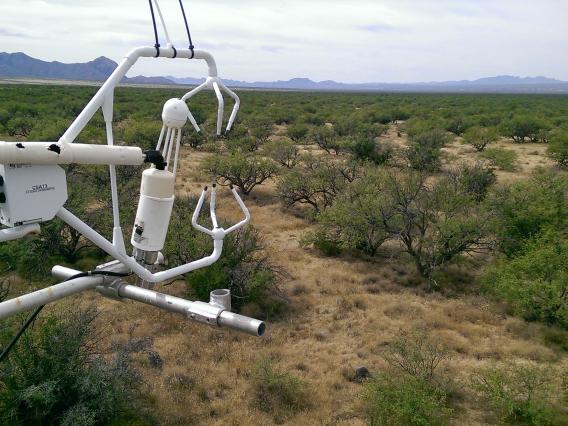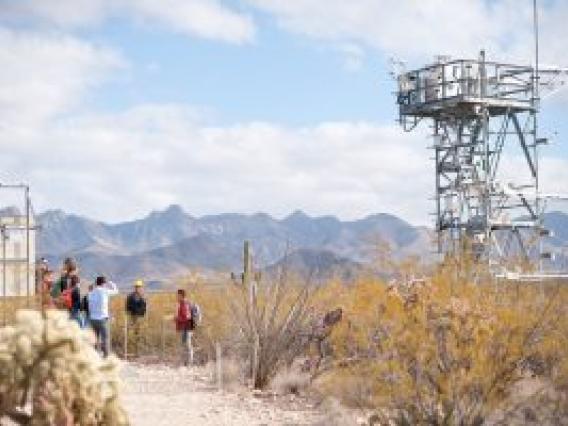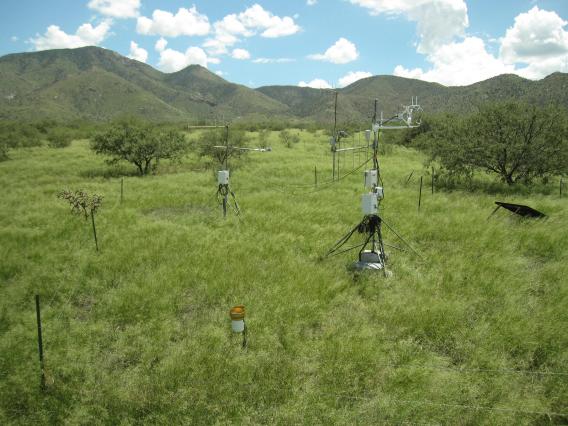Flux Tower Monitoring
Flux Towers are micrometeorological tower sites that use eddy covariance methods to measure the exchanges of carbon dioxide, water vapor, and energy between the biosphere and atmosphere. Each flux tower has multiple measurement levels outfitted with suites of sensors. The number of measurement levels on a tower vary from four to eight levels depending on the ecosystem structure at each site. Each boom arm is 4 m long, which is double the width of the tower to minimize the impact of flow distortion caused by the tower on wind measurements. Towers extend past the top of the vegetation canopy at each site to allow sensors mounted at the top and along the tower to capture the full profile of atmospheric conditions from the top of the vegetation canopy to the ground. Automated tower sensors collect data continuously to capture patterns and cycles across various time periods, ranging from seconds to years. (from: https://www.neonscience.org/)
AES Flux Towers participate in several aggregate networks, including FLUXNET and NEON.




